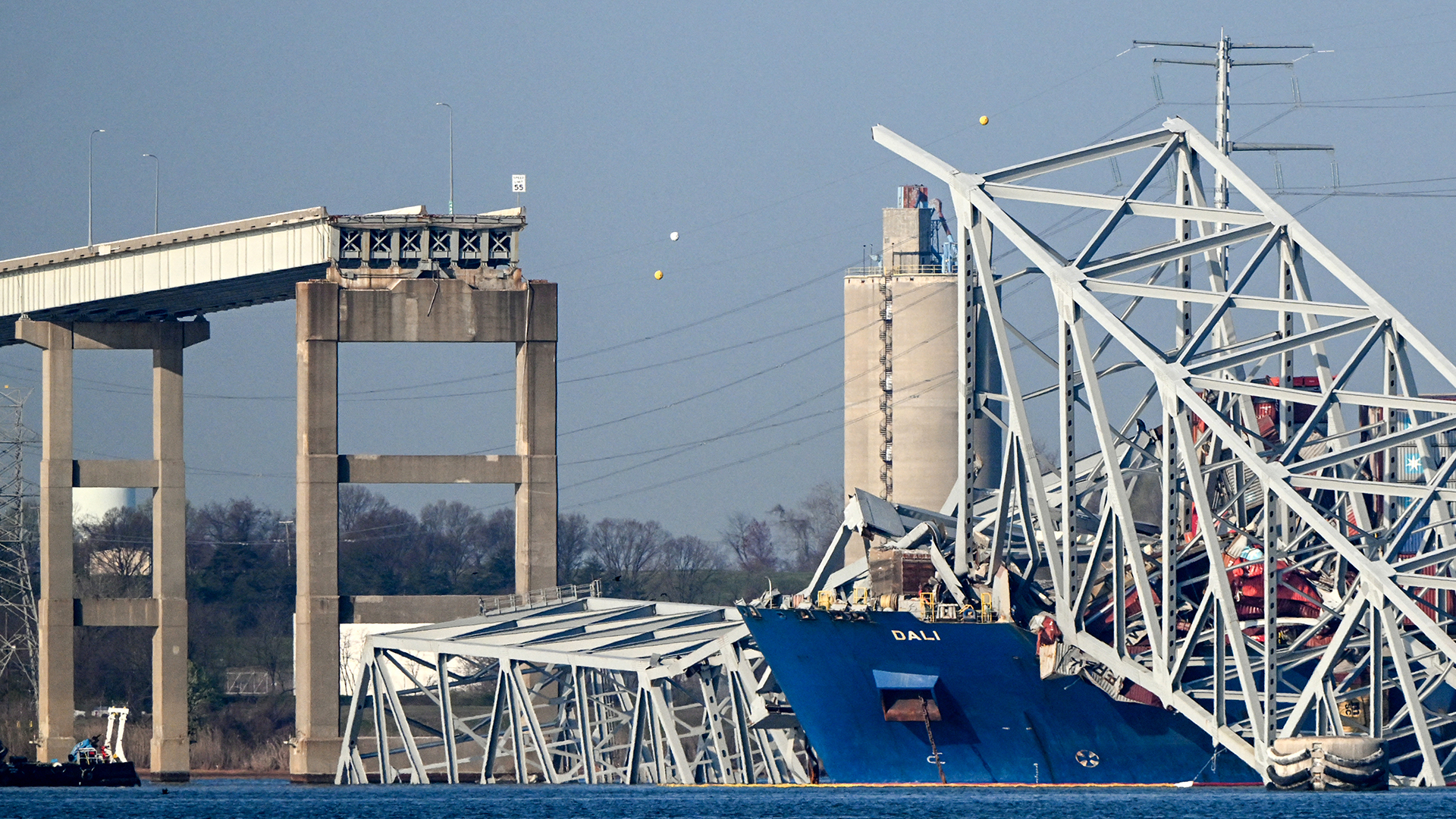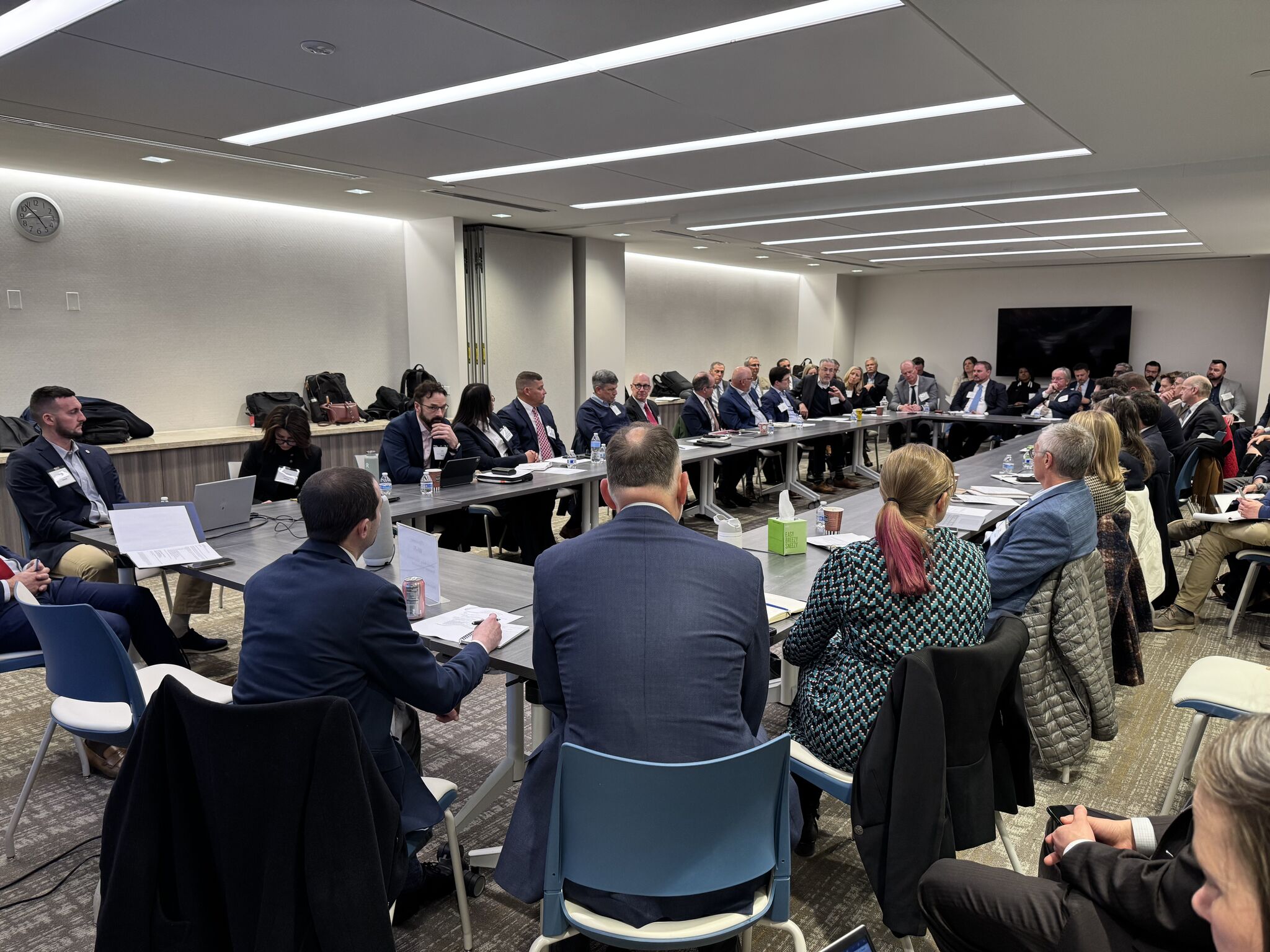Rethinking US infrastructure after the Baltimore bridge collapse

In March 2024, the Francis Scott Key Bridge in Baltimore became an unexpected symbol of America’s infrastructure crisis.
As a massive container ship struck its support, the landmark structure collapsed into the Patapsco River, taking with it six maintenance workers. The images of the bridge’s demise brought into focus a problem lurking beneath the surface of American infrastructure for decades: the deteriorating state of the country’s bridges.
While the Francis Scott Key Bridge was reportedly in satisfactory condition before the accident, its sudden collapse has drawn attention to the thousands of other bridges across the United States in far worse shape.
According to federal data, over 42,000 bridges in the country are classified as “poor condition,” with significant problems affecting vital structural components such as aging piers and beams.
These substandard structures carry an astonishing 167 million vehicles daily, putting countless lives at risk and highlighting the urgent need for widespread repairs and upgrades.
A $15 million lesson in infrastructure fragility
The destruction of the Francis Scott Key Bridge offers a stark example of the economic havoc that a single infrastructure failure can wreak.
The Port of Baltimore, a crucial hub for East Coast shipping, was forced to halt operations, disrupting supply chains and forcing businesses to scramble for alternatives. Federal and state officials estimate that the port’s closure alone costs the local economy $15 million daily.
The ripple effects extend far beyond the vicinity. Fifteen thousand people work directly for the port, with another 140,000 jobs dependent on port activity. These individuals and their families face economic uncertainty due to the bridge’s collapse. Meanwhile, the 30,000 vehicles that used the bridge daily must now find alternative routes, leading to increased commute times, higher fuel costs, and reduced productivity.
The insurance industry is bracing for what could become the largest marine loss in history. Lloyd’s of London anticipates a multi-billion dollar claim, underscoring the massive financial implications of infrastructure failures.
As for replacing the bridge, structural engineers estimate costs could range from $500 million to $1 billion, with completion expected at the end of the decade.
The Baltimore Bridge collapse is merely the tip of the iceberg. Across the United States, bridges are in dire need of repair and maintenance.
America’s aging bridges
The federal government’s National Bridge Inventory lists 621,000 bridges over 20 feet long, rating them on a scale of zero to nine. A score above seven is considered good, while anything below four for any bridge component is deemed poor.
The 42,400 bridges falling into the poor category have an average age of 70 years; many were built just after World War II.
What’s particularly alarming is that 80 percent of these poor-condition bridges have significant problems with their support structures or legs. Even more concerning, nearly 16,000 bridges were listed in poor condition a decade ago, indicating a systemic failure to address known issues.
The Fern Hollow Creek bridge collapse in Pittsburgh in January 2022 serves as another sobering example of the consequences of neglect.
The National Transportation Safety Board’s investigation revealed severe corrosion in the bridge’s steel legs, a problem that had been overlooked or inadequately addressed by inspectors and city officials. NTSB member Michael Graham said: “This bridge didn’t collapse just by an act of God. It collapsed because of a lack of maintenance and repair.”
The bridge crisis is wider than in major urban centers. In Mississippi, a state crisscrossed by rivers, bayous, and creeks, more than 5,000 bridges face significant challenges. Willie Simmons, chairman of Mississippi Transport, said: “When we look at the whole system, many bridges are in bad shape because of what’s referred to as timber piling, the old way of building bridges.”
This problem led to difficult decisions for state officials, including former Governor Phil Bryant.
Bryant said: “It was time to make a tough but dramatic decision. You can only imagine the results of that. Our farmers, those in the timber industry, and those in manufacturing responded negatively, let’s say. And I had a lot of work to do on that to bring those organizations and boards of supervisors and explain to them we didn’t have much of a choice.”
The governor’s decision was driven by a realization: “I couldn’t live as governor knowing that a school bus might be crossing one of these bridges, knowing they were substandard, knowing that they should be closed and seeing it collapse and take the lives of children.”
However, closing bridges for safety can create new risks, as Simmons explained: “If we have an emergency situation where first responders, like ambulances and fire engines, need to get to your home, and your home is on the other side of a bridge that’s been posted, an ambulance has to go ten miles, ten minutes out of the way. It could mean your life or death.”
$40 billion federal bridge fix
Recognizing the scale of the problem, the federal government has taken steps to address the nation’s crumbling bridge infrastructure. In 2021, President Joe Biden signed a massive infrastructure bill into law, allotting $40 billion to bridges over five years. This represents the largest dedicated bridge investment in decades.
Announcing the bill, President Biden highlighted the scope of the challenge: “Across our country, right now, there are 45,000 bridges, 45,000 that are in poor condition in all 50 states. And I’ve had a chance to see some of them myself as I’ve traveled the country.”
The bill includes $27.5 billion for smaller bridges, including those not directly connected to the interstate highway system. Recognizing local governments’ financial constraints, the federal government has committed to paying 100% of the costs of repairing these smaller bridges.
While $40 billion sounds like a substantial investment, it does not meet the need to address America’s bridge crisis comprehensively.
According to the American Road and Transport Builders Association, the total cost to repair all of America’s bridges would exceed $319 billion. To put this figure into perspective, it’s roughly equivalent to half of the annual property tax revenue collected by state and local governments across all 50 states.
Transportation Secretary Pete Buttigieg has acknowledged the long road ahead, stating, “The bottom line is America’s bridges need a lot of work. Work that will certainly take years. Maybe decades, to make good.”
The Baltimore bridge collapse serves as a stark reminder of America’s crumbling infrastructure.
Safety over short-term economic gains must be prioritized and funding must be boosted at all government levels. Rigorous inspection protocols and proactive maintenance are crucial, as is investment in cutting-edge bridge technologies.
Central to this effort is also developing comprehensive, long-term plans for sustainable infrastructure management. While the upfront costs are substantial, they pale in comparison to the potential loss of life and economic devastation.
ABOUT THE EDITOR
Deena Theresa A creative writer and journalist with a Master’s degree in International Journalism, Deena’s repertoire of work includes writing for Indian dailies like The New Indian Express and reading news on primetime television for a regional broadcaster. Having grown up in three countries, this third-culture kid feels that home is everywhere, and nowhere. Deena loves to dabble in music and art and believes that the latter and science share a symbiotic relationship.
Related
How SenseiNode Is Building Proof-of-Stake Infrastructure in Latin America
A lot of attention is paid to the decentralization of the Bitcoin network.Bitcoin miners should set up shop in a number of different jurisdictions in order to p
The Infrastructure of Racial Justice Is Under Attack. We Must…
President Donald Trump began February with a proclamation that Black History Month offered “an occasion to celebrate the contributions of so many Black Am
Bomb threat found “non-credible”: American Airlines after Delhi-bound flight diverted…
American Airlines has said that the "bomb threat on board", due to whi
Big infrastructure investment plans take shape in America
Amtrak and dozens of major industry partners representing construction, manufacturing, rail supply, engineering, and other sectors convened for an industr













